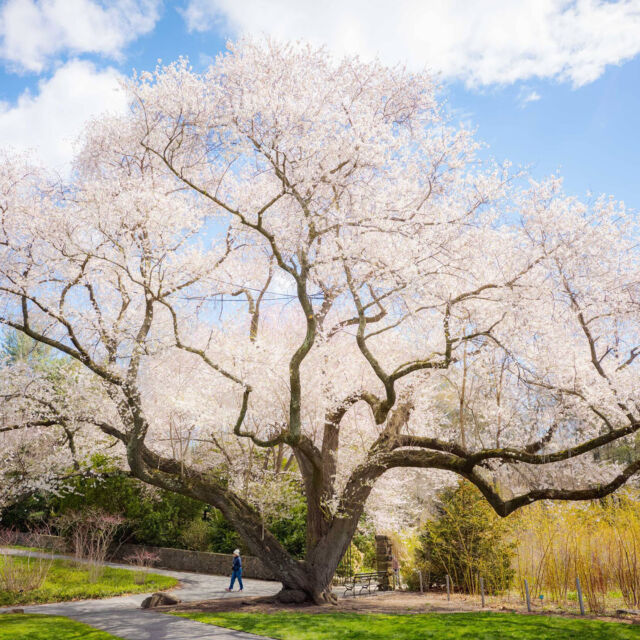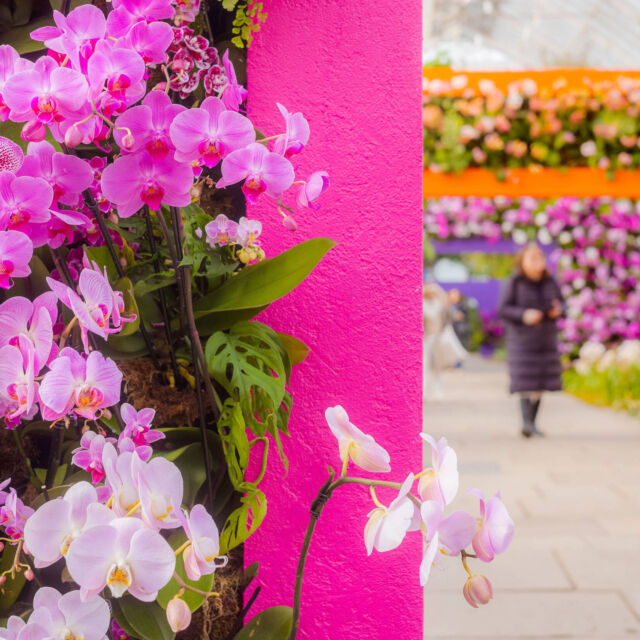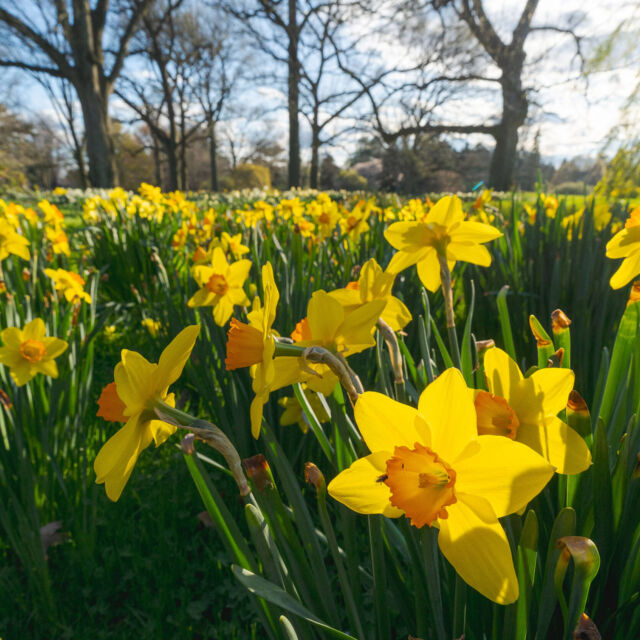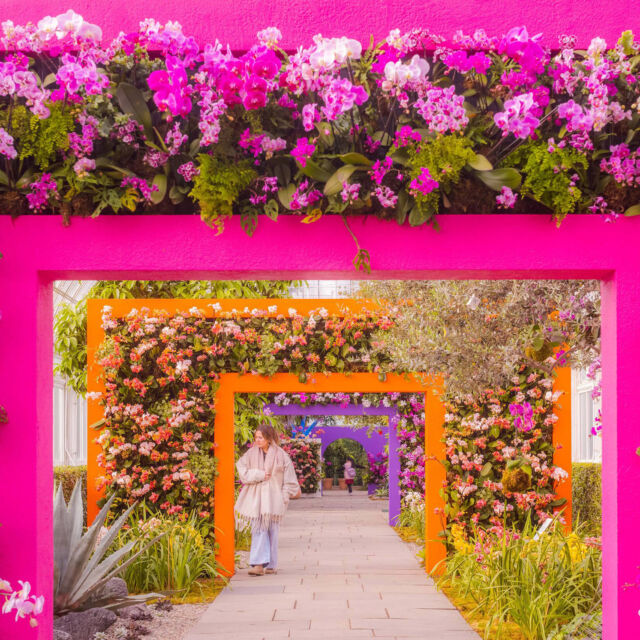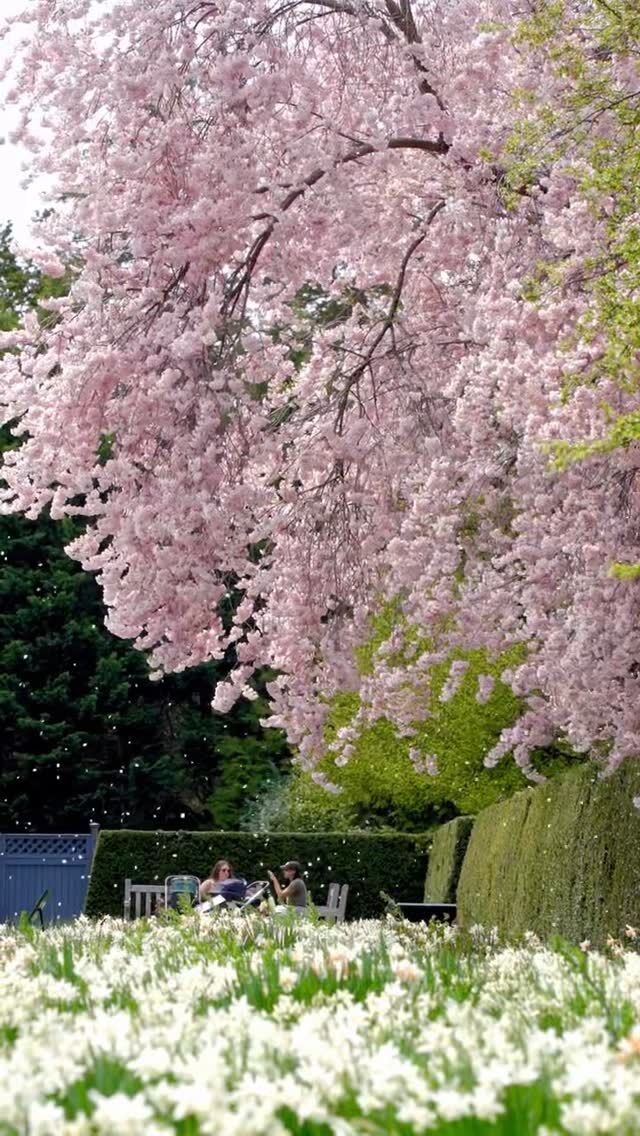From the Jungles in Java to Dutch Drawing Rooms: A Tribute to Two Remarkable Women
Stephen Sinon is the William B. O’Connor Curator of Special Collections, Research, and Archives in the LuEsther T. Mertz Library.
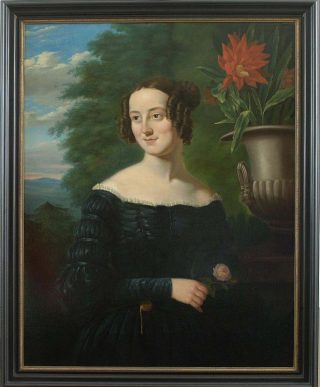
Oil painting of Berthe Hoola van Nooten, Collections of the Tropenmuseum, Amsterdam, Netherlands
Impressive in its sheer size and bold coloring, Fleurs, fruits et feuillages choisis de l’ile de Java: peints d’après nature was brought to fruition by Dutch botanical artist Berthe Hoola van Nooten (1817–92) in 1863 through the patronage of the Queen Consort of the Netherlands, Sophie of Wurttemberg (1818–77).
The plates depict a mixture of indigenous, naturalized, and introduced plants (such as the Mexican native poinsettia) commonly found in Java and include shrubs, flowering trees, and, perhaps the most striking of all, 16 portraits of edible fruits, including pomelo, rambutan, mangosteen, custard-apple, bread-fruit, mango, and papaya, among others. Because the specimens are all depicted as life-size, the finished book is 22.5 inches in height, making it one of the largest botanical works ever published.
Each plate is accompanied by a description of the plant and its culinary, medical, and ethnobotanical uses in both French and English. The plates, which were printed in Belgium by the lithographic firm of Pieter de Pannemaeker (1832–1904), have been described as some of the finest examples of chromolithography, which was still a relatively new technique when the book was first published. As such many of the plates are hand-finished. De Pannemaeker’s workshop produced over 3,000 illustrations for botanical books and periodicals.
Color-printed lithography—or chromolithography—is a very precise craft that begins by drawing an image directly onto a flat stone surface, most often zinc or limestone, with a grease-based crayon. Lithography is based on the principle that water and oil do not mix. The plates are proofed and then inked up with an oil-based printing ink. In chromolithography, a series of colored inks are used to create an image requiring the precise alignment of each print and a separate stone for each color used. It is not unusual for 12 or more colors to be used so that a run of a thousand prints could take up to five months to finish.
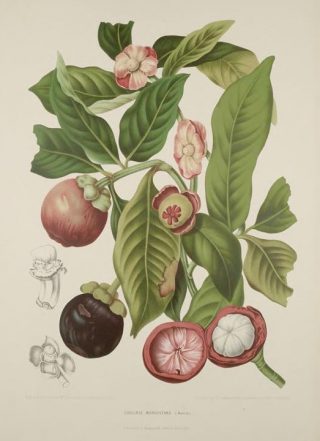
Illustration of Garcina mangostana, Berthe Hoola van Nooten
The preface of the work states that “it is particularly addressed to women.” Hoola van Nooten writes that she was “obliged by the terrible blows which blight our existence in order to be able to provide by labour for the wants of a numerous family. You may not have experienced … the sorrowful separation from home and country, the absence of a friendly greeting on a foreign shore. Death hath snatched away… the arm which was her sole support.”
Hoola van Nooten married a judge in 1838 and they moved to the Dutch colony of Suriname where she nurtured an interest in botany, regularly sending plant specimens she encountered to Dutch botanical gardens. The couple travelled often to Java on business, where in 1847 her husband died of yellow fever, leaving her a young widow with five children to support.
In Java, Hoola van Nooten gave drawing lessons to support her family and used her watercolor painting skills to capture the botanical wonders of Java for European audiences. In doing so she found solace and consolation in nature and wrote that she hoped women would follow her example, as the study of nature “draws the mind to the source of all true comfort.”
Making no pretensions to botanical knowledge, the sole merit of her work, she stated, is that she had provided botanists with faithful representations of nature. Nonetheless, the accompanying text with each of the 40 life-size illustrations does reference botanical families and a knowledge of the local botanical gardens established in Java, along with florid descriptions of each plant along with its history, symbolism, and ethnobotanical uses.
Briefly returning to the Netherlands, she tried unsuccessfully to publish her watercolors. It was only through the intervention and eventual patronage of the Queen Consort of the Netherlands, Sophie of Wurttemberg (1818–77), that she was finally able to get a selection of her paintings chromolithographed and published in 1863–64. The published work was dedicated to the Queen. Despite three editions of the work being published during her lifetime, Hoola van Nooten died in poverty in Batavia in 1892.
Queen Sophie’s marriage was not a happy one, and she took solace in her support of many intellectual pursuits. In addition to being a strong supporter of the arts, Sophie was interested in supporting the women’s movement in the Netherlands along with promoting animal rights and the creation of public parks. It is not recorded how Hoola van Nooten’s work came to the attention of the Queen, but these two women were responsible for the creation of one of the most sumptuously illustrated works ever published on the flora of southeast Asia.
SUBSCRIBE
Enter your email address to subscribe to this blog and receive updates on new posts.
